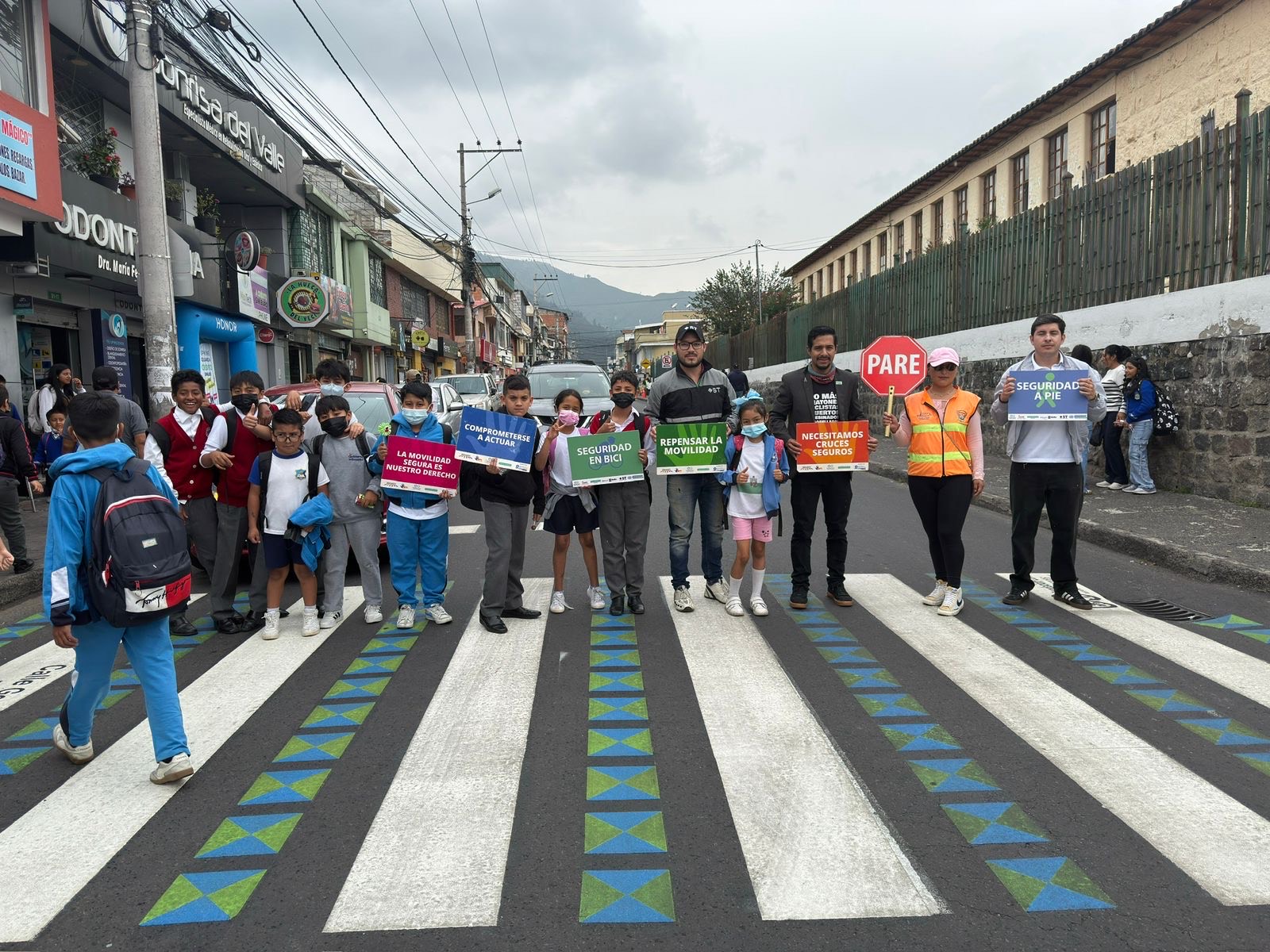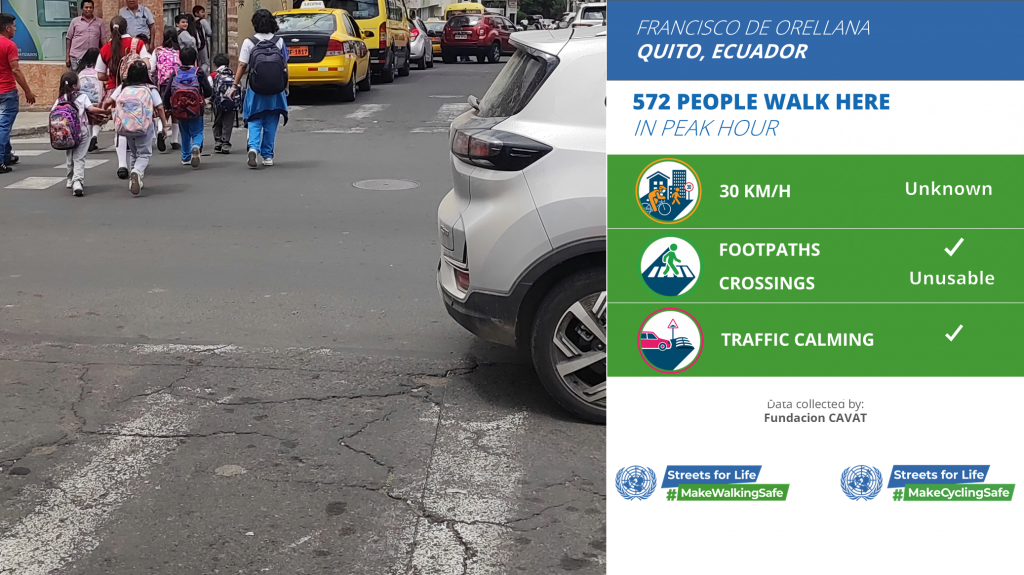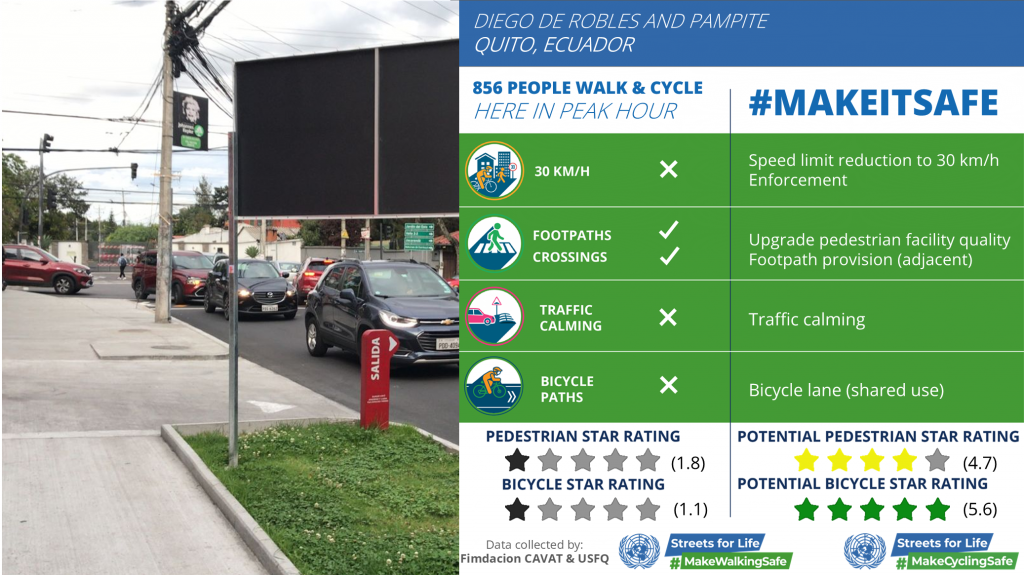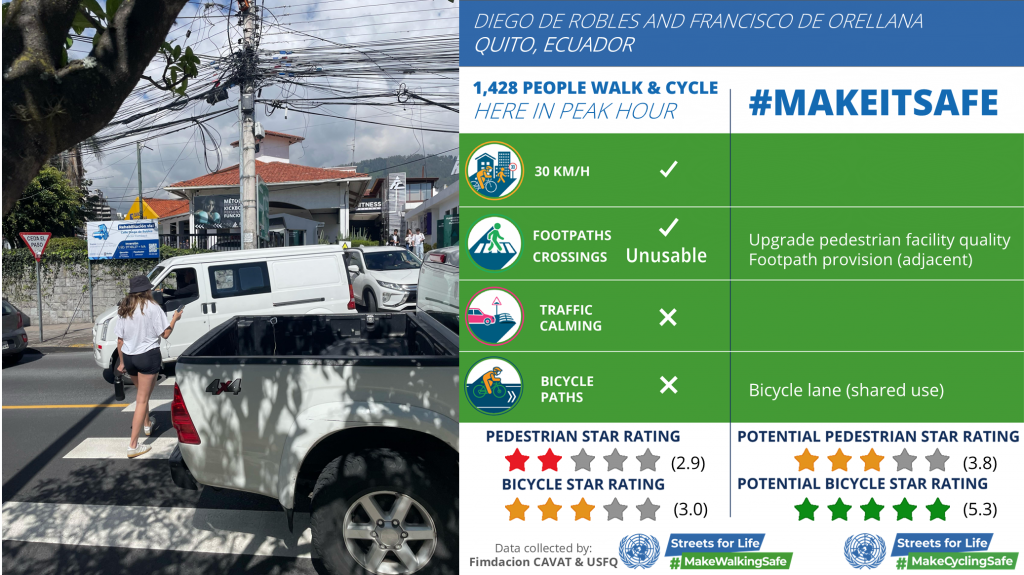
“Our goal is to help citizens feel more empowered and safer when choosing to walk or cycle in the city,” says Esteban Paredes, Global Network Manager at Fundacion CAVAT, Ecuador. “This UN Global Road Safety Week, we hope to raise greater awareness about the daily realities and vulnerabilities of pedestrians, cyclists, and motorcyclists—especially in urban areas.”
Fundacion CAVAT, working in partnership with Universidad San Francisco de Quito (USFQ), set the groundwork for their campaign last month, conducting two Mobility Snapshots near USFQ to demonstrate what needs to be done to make students’ university commutes safer.
The Mobility Snapshots at different intersections of Diego de Robles in Quito showed 856 people walking and cycling in peak hour at one intersection and 1,428 people at the other. Only one intersection had a 30 km/h limit and although both intersections had footpaths and crossings, not all of the existing crossings were safe. Esteban says, “Together with the students, we discovered that the horizontal signage—particularly the pedestrian crossings—had been incorrectly painted twice on the same street. This created confusion and posed a safety risk for students attempting to cross. It was surprising to see such a basic yet critical road safety element improperly implemented in a high-traffic pedestrian area.” Star Rating analysis from iRAP rated one of the intersections as 1.8 stars for pedestrians and 1.1 for bicycles, and the other as 2.9 for pedestrians and 3.0 for bicycles. iRAP’s analysis showed that by implementing 30 km/h limits with enforcement, upgrading or installing new pedestrian crossings, providing an additional stretch of footpath, and implementing traffic calming and bicycle lanes (shared with pedestrians), the intersections could become 3.9/4.7 star for pedestrians and 5.3/5.6 star for bicycles.
Fundacion CAVAT and USFQ plan to present the results to the relevant traffic authorities—specifically, the Municipality of Quito and the Department of Mobility—who will be responsible for evaluating and redesigning the intersection to ensure safer pedestrian conditions. During UN Global Road Safety Week, among other activities, they have engaged the support of the Municipality and a local road signage company to repaint the pedestrian crossing in front of the school where they conducted their first Mobility Snapshot last year. They hope that this symbolic implementation will pave the way for full implementation of the Mobility Snapshot recommendations at all three intersections.
“Success would mean seeing concrete action: not only having the first intersection improved as a result of our Mobility Snapshot, but also seeing similar interventions at the two additional locations we studied,” says Esteban. “Ultimately, it would reflect a shift toward more inclusive, responsive urban mobility planning that prioritizes the safety of all road users.”


